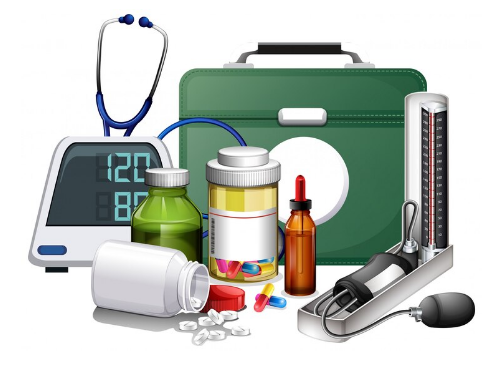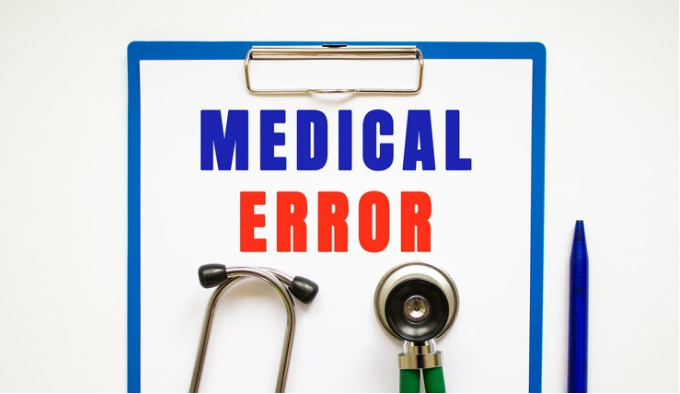Global Medical Device Industry Statistics: How Big Is It?

As reported by Market.us, the global market for medical devices was valued at $492 billion in 2022 and is anticipated to grow to $656 billion by 2032, with an expected compound annual growth rate (CAGR) of 3.0% during the forecast period from 2023 to 2032.
Table of Contents
- Top 10 Medical Device Usage Statistics
- How Many Medical Devices Are There?
- Who is the largest medical device distributor in the world?
- How Many Medical Devices are Sold each year?
- What are the most used medical devices?
- What is the fastest growing market in Medical Devices?
- Medical Device Usage by Category
- Medical Devices Usage by Region
- Real-World Impact of Medical devices
- Job & Labor Market Impacts
- Wrap ups
Top 10 Medical Device Usage Statistics
- In 2022, it was estimated that over 2 million different types of medical devices were available, with sales reaching hundreds of billions of dollars annually.
- As of 2024, Medtronic is the largest medical device company in the world by revenue, generating over $31.68 billion in 2022.
- The medical device market is expected to grow significantly, exceeding $700 billion by 2030.
- The fastest-growing market in the medical devices sector is Asia-Pacific, particularly countries like China and India.
- Blood glucose monitors are used by over 463 million people worldwide with diabetes, and blood pressure monitors are used daily by millions of people for hypertension management.
- MRI machines account for around 20% of diagnostic imaging procedures, while X-ray machines are the most widely used, performing millions of scans annually.
- The global surgical instruments market is estimated to be over $18 billion as of 2021
- The assistive devices market, including hearing aids and wheelchairs, was valued at around $20 billion in 2020.
- North America holds the largest share of the global medical device market, accounting for approximately 40% of the total market value, which was around $180 billion in 2022.
- Over 466 million people worldwide suffer from disabling hearing loss.
How Many Medical Devices Are There?
The WHO estimates that the global market includes around 2 million different types of medical devices, organized into over 7,000 generic groups. These devices cover a wide range, including instruments, machines, implants, reagents for in-vitro use, software, and other related items designed for medical purposes, either on their own or in combination.
Who is the largest medical device distributor in the world?
As of 2024, Medtronic is the largest medical device company in the world by revenue, generating over $31.68 billion in 2022. However, Abbott Laboratories recently overtook Medtronic in 2023, making it the top company with $31.27 billion in revenue for that fiscal year. Both companies are leading giants in the medical device industry, consistently ranking at the top of global lists.
Sources (Medical Design and Outsourcing) (MPO Magazine).
How Many Medical Devices are Sold each year?
Globally, the number of medical devices sold each year is immense, with the market experiencing consistent growth. In 2022, it was estimated that over 2 million different types of medical devices were available, with sales reaching hundreds of billions of dollars annually. The exact number of units sold each year isn't easily pinpointed, but the industry's overall value reflects the vast scale of sales. The medical device market is expected to grow significantly, exceeding $700 billion by 2030.
Sources (GlobalData) (Medical Design and Outsourcing).
What are the most used medical devices?
The most commonly used medical devices worldwide include a range of essential tools that support various aspects of healthcare. Some of the mostly used devices include:
- Syringes and Needles: These are fundamental for administering vaccines, medications, and for drawing blood, making them ubiquitous in healthcare settings globally.
Also read Refractive Error Statistics
- Gloves and Masks: Especially during the COVID-19 pandemic, personal protective equipment (PPE) like gloves and masks became some of the most widely used medical items.
- Thermometers: Used for measuring body temperature, thermometers are crucial in both clinical and home settings.
- Blood Pressure Monitors: These devices are vital for monitoring cardiovascular health, particularly for patients with hypertension or heart-related conditions.
- Stethoscopes: A basic diagnostic tool used by healthcare professionals to listen to heart and lung sounds.
- Blood Glucose Meters: Essential for diabetic patients to monitor blood sugar levels.
- Bandages and Dressings: Used extensively for wound care to protect and heal injuries.
These devices are vital across various healthcare environments, from hospitals and clinics to home care settings. The widespread use of these devices is driven by their necessity in routine medical procedures and health monitoring.
Sources: WHO, Global Atlas of Medical Devices, Health Products Policy and Standards.
What is the fastest growing market in Medical Devices?
The fastest-growing market in the medical devices sector is Asia-Pacific, particularly countries like China and India. The region's growth is driven by a rapidly expanding healthcare infrastructure, rising middle-class income, increasing prevalence of chronic diseases, and growing demand for advanced medical technologies.
In terms of specific device categories, wearable medical devices and In vitro diagnostics (IVD) are among the fastest-growing segments globally. Wearables, such as fitness trackers and remote monitoring devices, are gaining popularity due to the increasing emphasis on preventive care and health monitoring.
China is also emerging as a significant player in the global medical device market, with a growing focus on innovation and domestic production.
Sources (GlobalData) (Medical Design and Outsourcing)
Medical Device Usage by Category
Here’s a medical device usage statistics by category:
- Diagnostic Imaging
- Global Market Size: The diagnostic imaging market was valued at around $28 billion in 2020 and is expected to grow at a CAGR of about 5% through 2028.
- Usage Stats: MRI machines account for around 20% of diagnostic imaging procedures, while X-ray machines are the most widely used, performing millions of scans annually.
- Source: [Grand View Research - Diagnostic Imaging Market]
- Monitoring Devices
- Global Market Size: The patient monitoring device market was valued at approximately $22.5 billion in 2020 and is projected to reach $37 billion by 2027.
- Usage Stats: Blood glucose monitors are used by over 463 million people worldwide with diabetes, and blood pressure monitors are used daily by millions of people for hypertension management.
- Source: [Mordor Intelligence - Patient Monitoring Devices Market]
- Surgical Instruments
- Global Market Size: The global surgical instruments market is estimated to be over $18 billion as of 2021, with growth driven by an increase in surgeries worldwide.
- Usage Stats: Approximately 310 million major surgeries are performed each year, each requiring multiple surgical instruments.
- Source: [Fortune Business Insights - Surgical Instruments Market]
- Assistive Devices
- Global Market Size: The assistive devices market, including hearing aids and wheelchairs, was valued at around $20 billion in 2020.
- Usage Stats: Over 1 billion people need one or more assistive products, and this number is expected to double by 2050 as populations age.
- Source: [WHO - Assistive Technology]
- Therapeutic Devices
- Global Market Size: The market for therapeutic devices, including insulin pumps and dialysis machines, was valued at about $42 billion in 2021.
- Usage Stats: Over 4 million people globally rely on dialysis machines, and the number of insulin pump users is growing rapidly due to increasing diabetes prevalence.
- Source: [Markets and Markets - Dialysis Equipment Market]
- Consumables
- Global Market Size: The market for medical consumables like syringes, needles, and surgical gloves was valued at around $59 billion in 2020.
- Usage Stats: Billions of syringes and needles are used annually, with surgical gloves being an essential item used in nearly all medical procedures.
- Source: [Statista - Medical Supplies and Equipment Market]
Medical Devices Usage by Region
Here’s a summary of medical device usage statistics by geographical regions, including detailed insights and links to sources:
- North America
- Market Size: North America holds the largest share of the global medical device market, accounting for approximately 40% of the total market value, which was around $180 billion in 2022.
- Key Devices: High usage of advanced diagnostic imaging devices, monitoring devices (e.g., glucose monitors), and surgical instruments. The U.S. is a leader in the adoption of cutting-edge technologies like robotic surgery.
- Growth Drivers: Aging population, high healthcare expenditure, and a robust regulatory framework.
- Source: [GlobalData - Medical Devices in North America]
- Europe
- Market Size: Europe is the second-largest market, making up about 27% of the global market. The market size was estimated at over $135 billion in 2022.
- Key Devices: Widespread use of diagnostic imaging devices and monitoring equipment, particularly in countries like Germany, the UK, and France.
- Growth Drivers: Strong focus on healthcare innovations and government initiatives to improve healthcare infrastructure.
- Source: [European Medical Device Market Outlook]
- Asia-Pacific
- Market Size: The Asia-Pacific region is the fastest-growing market, with an estimated CAGR of over 7% and a market size projected to reach $133 billion by 2025.
- Key Devices: High demand for consumables, diagnostic imaging devices, and cardiovascular devices, driven by rising healthcare needs in China, Japan, and India.
- Growth Drivers: Expanding middle class, increasing healthcare expenditure, and government initiatives in healthcare infrastructure.
- Source: [Frost & Sullivan - Asia-Pacific Medical Device Market]
- Latin America
- Market Size: Latin America's medical device market was valued at around $10 billion in 2022, with growth driven by Brazil and Mexico.
- Key Devices: Significant use of basic consumables, diagnostic devices, and surgical instruments, with growing demand for advanced medical devices.
- Growth Drivers: Economic growth, expanding healthcare access, and increasing incidence of chronic diseases.
- Source: [BMI Research - Latin America Medical Devices]
- Middle East and Africa
- Market Size: The market size is smaller, at around $7 billion, but growing steadily with a focus on diagnostic and monitoring devices.
- Key Devices: High usage of diagnostic equipment and surgical instruments, especially in countries like South Africa, Saudi Arabia, and the UAE.
- Growth Drivers: Improving healthcare infrastructure, increasing government investments, and a growing private healthcare sector.
- Source: [Deloitte - Middle East and Africa Medical Device Market]
- Oceania
- Market Size: The Oceania region, including Australia and New Zealand, has a medical device market valued at around $6 billion.
- Key Devices: High usage of diagnostic imaging devices, particularly in urban areas, and increasing adoption of wearable medical devices.
- Growth Drivers: High healthcare standards, government support, and a focus on early disease detection.
- Source: [Australia's Medical Device Market Overview]
Real-World Impact of Medical devices
Medical devices have a great impact on global healthcare, improving patient outcomes, enhancing the efficiency of medical procedures, and driving down long-term healthcare costs. Here are some statistics that highlight the real-world impact of medical devices:
- Reduction in Mortality and Morbidity
- Cardiac Devices: The use of pacemakers, defibrillators, and stents has been associated with a significant reduction in mortality rates from cardiovascular diseases. For example, implantable cardioverter-defibrillators (ICDs) can reduce the risk of sudden cardiac death by 31% compared to medication alone.
- Source: [American Heart Association - Cardiovascular Disease Statistics]
- Enhanced Quality of Life
- Hearing Aids: Over 466 million people worldwide suffer from disabling hearing loss. Hearing aids can significantly improve communication abilities and overall quality of life for these individuals.
- Mobility Devices: Assistive devices such as wheelchairs and prosthetics enable millions of people with disabilities to lead more independent lives, improving both mobility and social participation.
- Source: [WHO - Assistive Technology] [WHO - Deafness and Hearing Loss]
- Cost Savings and Economic Impact
- Medical Imaging: The use of diagnostic imaging, such as MRI and CT scans, contributes to early disease detection, reducing the need for more costly treatments down the line. For instance, early detection of breast cancer through mammography can reduce treatment costs by 20-30%.
- Source: [The Lancet - Economic Impact of Medical Imaging]
- Increased Life Expectancy
- Dialysis Machines: Approximately 2 million people worldwide depend on dialysis for survival, particularly those with end-stage renal disease. Access to dialysis increases life expectancy and improves quality of life for these patients.
- Source: [National Kidney Foundation - Dialysis Facts]
- Global Health Improvements
- Vaccination Devices: Devices like auto-disable syringes have been critical in global vaccination campaigns, contributing to the eradication of diseases like smallpox and the near-eradication of polio. These devices ensure safe and effective vaccine delivery, especially in low-resource settings.
- Source: [WHO - Global Vaccine Action Plan]
- Increased Surgical Success Rates
- Minimally Invasive Surgery Tools: The use of laparoscopic instruments has revolutionized surgery, reducing recovery times, minimizing scarring, and lowering the risk of complications. This approach has led to shorter hospital stays and reduced healthcare costs.
- Source: [National Institutes of Health - Minimally Invasive Surgery Benefits]
Job & Labor Market Impacts
The medical device industry significantly impacts the job and labor markets globally:
- Employment Numbers
- Global Employment: The medical device industry employs over 2 million people worldwide. In the United States alone, the industry provides jobs to more than 500,000 individuals across various sectors, including manufacturing, research and development, and sales.
- Source: [AdvaMed - U.S. Medical Technology Industry Employment]
- Job Growth
- U.S. Market: The U.S. medical device industry is expected to grow by 5% annually, leading to increased demand for skilled workers in fields such as biomedical engineering, quality assurance, and regulatory affairs.
- Europe: In Europe, the medical device sector is responsible for employing more than 675,000 people, with significant job growth projected, especially in Germany, the UK, and France.
- Sources: [MedTech Europe - Employment in the European Medtech] [U.S. Bureau of Labor Statistics - Medical Equipment Manufacturing]
- Economic Impact
- U.S. Economic Contribution: The U.S. medical device industry contributes approximately $150 billion to the economy annually, including high-paying jobs in manufacturing and development.
- Global Economic Impact: The global medical device market was valued at over $450 billion in 2021, with significant contributions to GDP in major economies such as the U.S., Germany, and Japan.
Source: [MarketWatch - Global Medical Devices Market] [SelectUSA - Medical Technology Industry]
- Wages and Salaries
- U.S. Salaries: Employees in the U.S. medical device sector earn an average salary of $75,000 per year, with roles in research and development, regulatory affairs, and clinical trials often commanding higher wages.
- Global Trends: Salaries in the medical device industry are generally higher than average across all sectors, with the highest wages found in countries with strong healthcare markets like the U.S., Germany, and Switzerland.
- Sources: [MedReps - Medical Device Salary Report] [U.S. Bureau of Labor Statistics - Healthcare Occupations]
- Regional Job Concentrations
- Medical Device Hubs: Key regions for medical device jobs include the U.S. (California, Massachusetts, Minnesota), Germany (Baden-Württemberg, Bavaria), and Ireland, which has a significant concentration of medical device manufacturing and R&D.
- Source: [Deloitte - Global Medical Device Industry]
- Impact of Innovation and Technology
- Automation and AI: The rise of automation, AI, and digital health technologies is transforming the medical device labor market, creating demand for new skill sets in areas like data analysis, machine learning, and digital health.
- Source: [McKinsey & Company - Future of Work in Medical Devices]
Wrap ups
Medical technology plays a role in saving lives, enhancing patient outcomes, and reducing healthcare costs. It stands as one of the most dynamic manufacturing sectors in the U.S., driving innovation that benefits people worldwide. Additionally, it contributes to the economy by creating high-quality jobs across the nation. What’s your opinion on the above medtech usage statistics?



